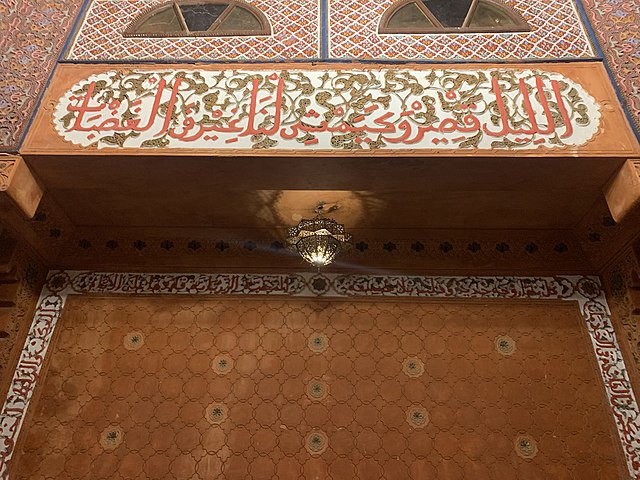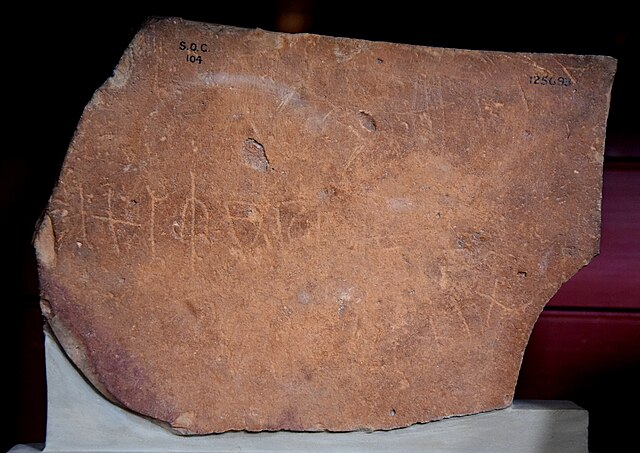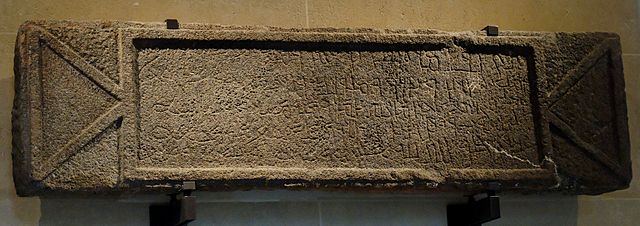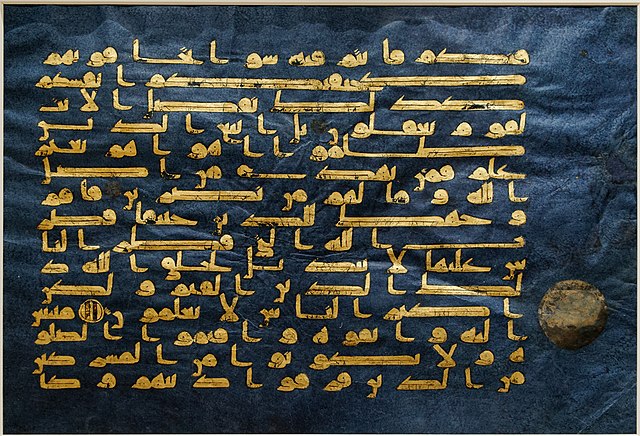Moroccan Arabic, also known as Darija, is the dialectal, vernacular form or forms of Arabic spoken in Morocco. It is part of the Maghrebi Arabic dialect continuum and as such is mutually intelligible to some extent with Algerian Arabic and to a lesser extent with Tunisian Arabic. It is spoken by 90.9% of the population of Morocco. While Modern Standard Arabic is used to varying degrees in formal situations such as religious sermons, books, newspapers, government communications, news broadcasts and political talk shows, Moroccan Arabic is the predominant spoken language of the country and has a strong presence in Moroccan television entertainment, cinema and commercial advertising. Moroccan Arabic has many regional dialects and accents as well, with its mainstream dialect being the one used in Casablanca, Rabat, Tangier, Marrakesh and Fez, and therefore it dominates the media and eclipses most of the other regional accents.

Decorations written in Moroccan Arabic at Chez Ali palace in Marrakech.
Arabic is a Central Semitic language of the Afroasiatic language family spoken primarily in the Arab world. The ISO assigns language codes to 32 varieties of Arabic, including its standard form of Literary Arabic, known as Modern Standard Arabic, which is derived from Classical Arabic. This distinction exists primarily among Western linguists; Arabic speakers themselves generally do not distinguish between Modern Standard Arabic and Classical Arabic, but rather refer to both as al-ʿarabiyyatu l-fuṣḥā or simply al-fuṣḥā (اَلْفُصْحَىٰ).
Safaitic inscription
The Namara inscription, a sample of Nabataean script, considered a direct precursor of Arabic script.
Arabic from the Quran in the old Hijazi dialect (Hijazi script, 7th century AD)
The Qur'an has served and continues to serve as a fundamental reference for Arabic. (Maghrebi Kufic script, Blue Qur'an, 9th–10th century)





